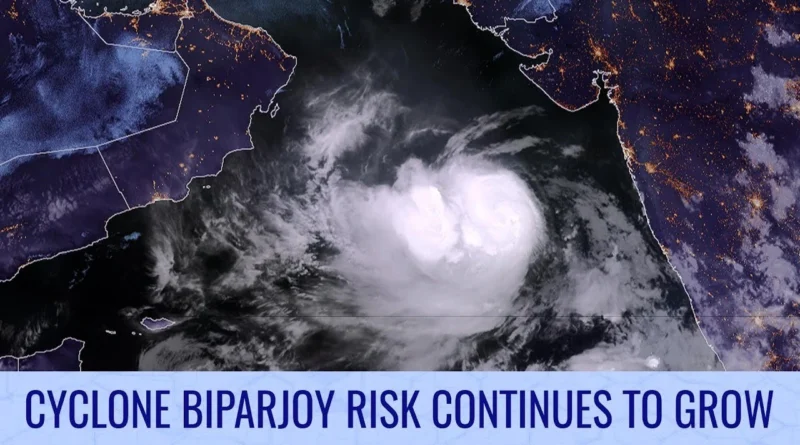Cyclone Biparjoy: A Growing Threat in the Arabian Sea
The ‘very severe’ cyclonic storm Biparjoy is rapidly gaining strength, posing a significant threat to coastal regions. With the India Meteorological Department (IMD) issuing warnings and taking precautionary measures, the nation is bracing itself for the impact of this intensifying natural disaster. In this article, we delve into the latest developments surrounding Cyclone Biparjoy and the steps being taken to mitigate its potential devastation.
Intensification and Movement
According to the IMD, Cyclone Biparjoy is expected to further intensify in the next twenty-four hours. The storm is predicted to move north-northeastwards, amplifying concerns for regions in its path. As it gains strength, the potential for destructive winds, heavy rainfall, and storm surges increases, necessitating immediate action to safeguard vulnerable coastal areas.
Impacts on Coastal Areas
The approach of Cyclone Biparjoy has already manifested in the form of high waves along the Arabian Sea coast, with Tithal Beach in Valsad bearing witness to its ferocity. In response, authorities have closed the beach to tourists until June 14 as a precautionary measure. This proactive step aims to ensure the safety and well-being of visitors who would otherwise be at risk from the powerful waves and unpredictable weather conditions.
Geographical Location of Cyclone Biparjoy
As of June 8, the very severe cyclonic storm Biparjoy was situated over the east-central Arabian Sea, approximately 840 kilometers west-southwest of Goa and 870 kilometers west-southwest of Mumbai. The storm’s position underscores the need for heightened preparedness in these areas, as they lie within its potential trajectory.
The Name ‘Biparjoy’
The name ‘Biparjoy’ has been given to this cyclonic storm by Bangladesh. Naming tropical cyclones helps in the identification, tracking, and dissemination of information related to these weather phenomena. It allows for better coordination among nations and aids in raising awareness among affected communities.
Preparedness and Mitigation Efforts
In light of the imminent threat posed by Cyclone Biparjoy, the IMD and local authorities have been working tirelessly to ensure the safety of residents and minimize potential damage. Early warnings and alerts have been issued to keep the public informed and facilitate evacuation procedures in vulnerable areas. Disaster response teams, emergency services, and relief agencies are on high alert, ready to respond swiftly and effectively if the situation worsens.
Learning from Past Experiences
Cyclones have wreaked havoc in coastal regions before, leaving a trail of destruction in their wake. The occurrence of Cyclone Biparjoy serves as a stark reminder of the importance of learning from past experiences. Lessons gleaned from previous cyclones have helped shape response strategies, enhance infrastructure, and improve disaster management systems. By drawing on these lessons, authorities can better prepare and protect communities in the face of such natural calamities.
Conclusion
Cyclone Biparjoy’s intensification and north-northeastward movement present a grave concern for coastal regions in its path. As authorities closely monitor its progress, the focus remains on preparedness, early warning systems, and evacuation procedures.
By prioritizing the safety and well-being of residents and implementing effective mitigation measures, we can navigate through this storm and emerge with minimal loss and damage. The resilience and cooperation of communities, along with the diligent efforts of meteorological departments and emergency response teams, will play a vital role in mitigating the impact of Cyclone Biparjoy and safeguarding lives and livelihoods.

